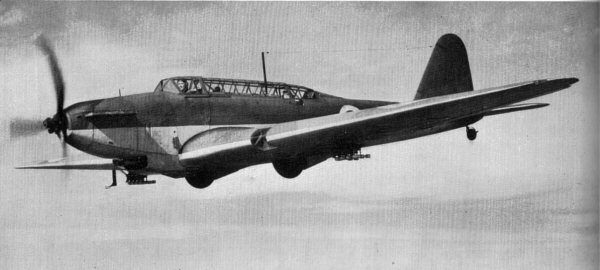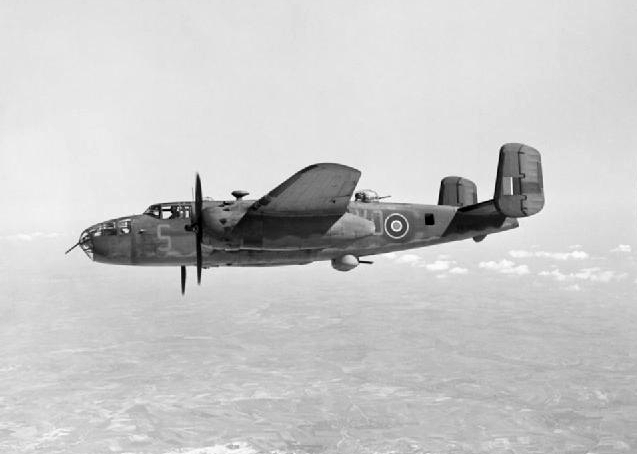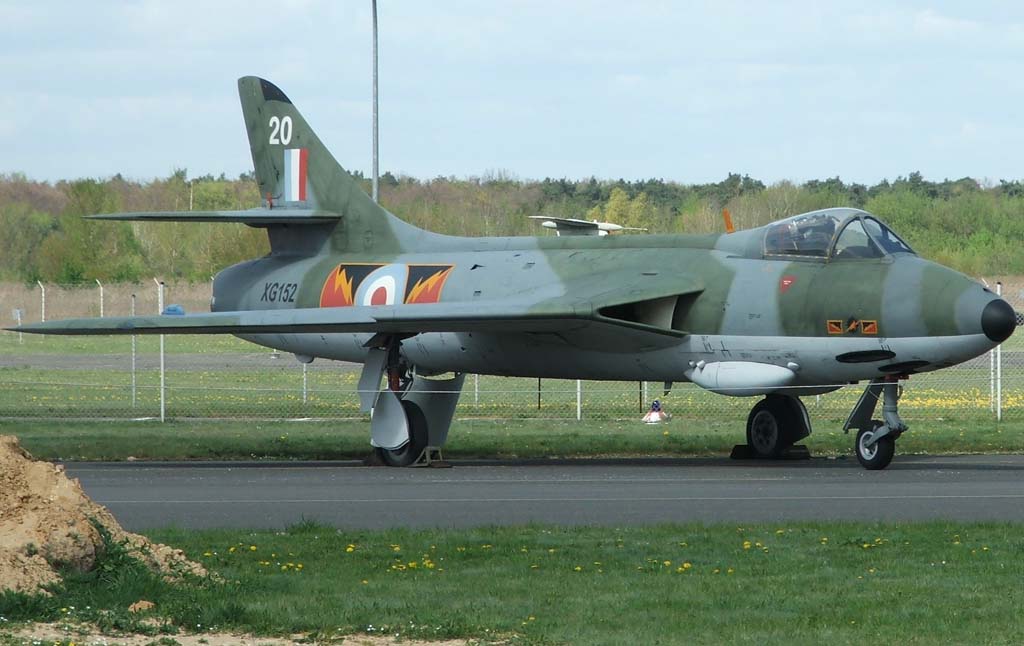No. 98 Squadron RAF on:
[Wikipedia]
[Google]
[Amazon]
No. 98 Squadron was a
 No. 98 Squadron RFC was formed on 30 August 1917 at RFCS Harlaxton,
No. 98 Squadron RFC was formed on 30 August 1917 at RFCS Harlaxton,
 No. 98 Squadron was reformed on 17 February 1936 at Abingdon as a day-bomber squadron equipped with the
No. 98 Squadron was reformed on 17 February 1936 at Abingdon as a day-bomber squadron equipped with the
 During the first nine months of World War II it served as a reserve squadron and from April–June 1940 was based at Nantes, France, though it flew no combat missions. Evacuated back to England during the Battle of France, the Squadron lost 90 of its personnel when the ship was bombed and sunk off Saint-Nazaire on 17 June 1940.
After re-assembling at
During the first nine months of World War II it served as a reserve squadron and from April–June 1940 was based at Nantes, France, though it flew no combat missions. Evacuated back to England during the Battle of France, the Squadron lost 90 of its personnel when the ship was bombed and sunk off Saint-Nazaire on 17 June 1940.
After re-assembling at  No. 98 Squadron reformed on 12 September 1942 at
No. 98 Squadron reformed on 12 September 1942 at
 After the war the Squadron remained with the British Air Forces of Occupation in Germany until 1957. It converted to the de Havilland Mosquito in September 1945, and in February 1951, received
After the war the Squadron remained with the British Air Forces of Occupation in Germany until 1957. It converted to the de Havilland Mosquito in September 1945, and in February 1951, received
Royal Air Force
The Royal Air Force (RAF) is the United Kingdom's air and space force. It was formed towards the end of the First World War on 1 April 1918, becoming the first independent air force in the world, by regrouping the Royal Flying Corps (RFC) an ...
bomber squadron during World War I
World War I (28 July 1914 11 November 1918), often abbreviated as WWI, was one of the deadliest global conflicts in history. Belligerents included much of Europe, the Russian Empire, the United States, and the Ottoman Empire, with fightin ...
and World War II
World War II or the Second World War, often abbreviated as WWII or WW2, was a world war that lasted from 1939 to 1945. It involved the vast majority of the world's countries—including all of the great powers—forming two opposing ...
. It flew fighter-bombers post-war, and converted to fighters in 1955. Reformed as a ballistic missile unit between 1959 and 1963, its final incarnation was as a radar calibration unit. It was disbanded in 1976.
History
World War I
 No. 98 Squadron RFC was formed on 30 August 1917 at RFCS Harlaxton,
No. 98 Squadron RFC was formed on 30 August 1917 at RFCS Harlaxton, Lincolnshire
Lincolnshire (abbreviated Lincs.) is a Counties of England, county in the East Midlands of England, with a long coastline on the North Sea to the east. It borders Norfolk to the south-east, Cambridgeshire to the south, Rutland to the south-we ...
, but soon moved to Old Sarum
Old Sarum, in Wiltshire, South West England, is the now ruined and deserted site of the earliest settlement of Salisbury. Situated on a hill about north of modern Salisbury near the A345 road, the settlement appears in some of the earliest r ...
, Wiltshire
Wiltshire (; abbreviated Wilts) is a historic and ceremonial county in South West England with an area of . It is landlocked and borders the counties of Dorset to the southwest, Somerset to the west, Hampshire to the southeast, Gloucestershire ...
. As a day-bombing unit equipped with the Airco DH.9, it moved to Northern France in April 1918, immediately seeing action during the Battle of the Lys, and then during the Second Battle of the Marne
The Second Battle of the Marne (french: Seconde Bataille de la Marne) (15 July – 18 July 1918) was the last major German offensive on the Western Front during the First World War. The attack failed when an Allied counterattack, supported by s ...
and the Battle of Amiens. From 1 November 1918 the squadron was employed chiefly with reconnaissance work, and after the Armistice
An armistice is a formal agreement of warring parties to stop fighting. It is not necessarily the end of a war, as it may constitute only a cessation of hostilities while an attempt is made to negotiate a lasting peace. It is derived from the ...
acted mainly as a holding unit for disbanding DH-9 squadrons. The Squadron returned to England on 20 March 1919, and was disbanded four days later.
During its active service in France the Squadron claimed 40 enemy aircraft destroyed, 35 'driven out of control', and 4 'driven down'. Thirteen aircraft of the Squadron were shot down over enemy territory, and another 13 declared missing; ten crashed or crash-landed in Allied territory and about 31 were damaged or destroyed in accidents. Nineteen men were killed in action, 22 were reported missing, 14 were wounded, 13 injured in crashes, 16 taken prisoner and five accidentally killed.
Reformation
 No. 98 Squadron was reformed on 17 February 1936 at Abingdon as a day-bomber squadron equipped with the
No. 98 Squadron was reformed on 17 February 1936 at Abingdon as a day-bomber squadron equipped with the Hawker Hind
The Hawker Hind was a British light bomber of the inter-war years produced by Hawker Aircraft for the Royal Air Force. It was developed from the Hawker Hart day bomber introduced in 1931.
Design and development
An improved Hawker Hart bomber d ...
. In August it moved to Hucknall
Hucknall, formerly Hucknall Torkard, is a market town in the Ashfield district of Nottinghamshire, England. It lies 7 miles north of Nottingham, 7 miles south-east of Kirkby-in-Ashfield, 9 miles from Mansfield and 10 miles south of Sutton-i ...
, transferring from 1 Group to 2 Group, and in 1938 was re-equipped with the Fairey Battle
The Fairey Battle is a British single-engine light bomber that was designed and manufactured by the Fairey Aviation Company. It was developed during the mid-1930s for the Royal Air Force (RAF) as a monoplane successor to the Hawker Hart and ...
.
World War II
 During the first nine months of World War II it served as a reserve squadron and from April–June 1940 was based at Nantes, France, though it flew no combat missions. Evacuated back to England during the Battle of France, the Squadron lost 90 of its personnel when the ship was bombed and sunk off Saint-Nazaire on 17 June 1940.
After re-assembling at
During the first nine months of World War II it served as a reserve squadron and from April–June 1940 was based at Nantes, France, though it flew no combat missions. Evacuated back to England during the Battle of France, the Squadron lost 90 of its personnel when the ship was bombed and sunk off Saint-Nazaire on 17 June 1940.
After re-assembling at Gatwick
Gatwick Airport (), also known as London Gatwick , is a major international airport near Crawley, West Sussex, England, south of Central London. In 2021, Gatwick was the third-busiest airport by total passenger traffic in the UK, after H ...
in July 1940, the Squadron was attached to Coastal Command
RAF Coastal Command was a formation within the Royal Air Force (RAF). It was founded in 1936, when the RAF was restructured into Fighter, Bomber and Coastal Commands and played an important role during the Second World War. Maritime Aviation ...
and stationed at Kaldadarnes, Iceland for coastal patrol and anti-submarine duties. The Squadron supplemented its Battles with a few Hawker Hurricane
The Hawker Hurricane is a British single-seat fighter aircraft of the 1930s–40s which was designed and predominantly built by Hawker Aircraft Ltd. for service with the Royal Air Force (RAF). It was overshadowed in the public consciousness b ...
fighter aircraft in June 1940 but was disbanded on 15 July 1941 passing its aircraft to the newly established No. 1523 Flight. In August 1999, melting ice on a remote glacier on Iceland revealed the wreck of Battle P2330 and its crew, the aircraft having disappeared whilst on a ferry flight from Kaldrarnes on 26 May 1941. The remains of the four airmen on board, two crew and two passengers, were recovered and buried at the Fossvogur War Cemetery in Reykjavik on 27 August 2000.
 No. 98 Squadron reformed on 12 September 1942 at
No. 98 Squadron reformed on 12 September 1942 at RAF West Raynham
Royal Air Force West Raynham or more simply RAF West Raynham is a former Royal Air Force station located west of West Raynham, Norfolk and southwest of Fakenham, Norfolk, England.
The airfield opened during May 1939 and was used by RAF Bomb ...
as a bomber squadron of 2 Group, flying the North American Mitchell II. Relocating to Foulsham
Foulsham is a village and civil parish in the English county of Norfolk. The village is located north-east of Dereham and north-west of Norwich. Foulsham is renowned in the local area for its unspoilt nature and the number of Sixteenth and Sev ...
in mid-October, the Squadron continued training on the Mitchell, being declared operational on 8 December 1942, at first flying Air Sea Rescue
Air-sea rescue (ASR or A/SR, also known as sea-air rescue), and aeronautical and maritime search and rescue (AMSAR) by the ICAO and IMO, is the coordinated search and rescue (SAR) of the survivors of emergency water landings as well as people ...
(ASR) missions. On 22 January 1943 the Squadron made its first attack on the enemy, when six Mitchells from 98 Squadron and six from No. 180 Squadron (also flying its first combat mission), with an escort of Mustang
The mustang is a free-roaming horse of the Western United States, descended from horses brought to the Americas by the Spanish. Mustangs are often referred to as wild horses, but because they are descended from once- domesticated animals, the ...
fighters from 169 Squadron, attacked oil installations at Terneuzen, Belgium. One 98 Squadron Mitchell was shot down by German anti-aircraft fire while two of 180 Squadron's aircraft together with two 169 Squadron Mustangs were shot down by Focke-Wulf Fw 190 fighters. Following this inauspicious debut, 98 Squadron returned to ASR missions while modifications were made to the Mitchell's defensive gun turrets, the Squadron returning to combat on 13 May when six aircraft attacked railway marshalling yards at Boulogne. In August 1943 the Squadron moved to Dunsfold
Dunsfold is a village in the borough of Waverley, Surrey, England, 8.7 miles (14 kilometres) south of Guildford. It lies in the Weald and reaches in the north the southern escarpment of the Greensand Ridge. It includes the Wey and Arun Canal ...
to take part in pre-invasion attacks on Northern France and on V1 flying bomb
The V-1 flying bomb (german: Vergeltungswaffe 1 "Vengeance Weapon 1") was an early cruise missile. Its official Ministry of Aviation (Nazi Germany), Reich Aviation Ministry () designation was Fi 103. It was also known to the Allies as the buz ...
launching sites in the Pas-de-Calais. After the Normandy landings
The Normandy landings were the landing operations and associated airborne operations on Tuesday, 6 June 1944 of the Allies of World War II, Allied invasion of Normandy in Operation Overlord during World War II. Codenamed Operation Neptune and ...
the Squadron operated in close support of the advancing Allied armies, and from October 1944 was based at Melsbroek
Melsbroek Air Base is a Belgian Air Component facility in Steenokkerzeel, northeast of Brussels, the capital of Belgium. It is located on the northern side of the same site as Brussels Airport, with which it shares runways and ground and air c ...
near Brussels
Brussels (french: Bruxelles or ; nl, Brussel ), officially the Brussels-Capital Region (All text and all but one graphic show the English name as Brussels-Capital Region.) (french: link=no, Région de Bruxelles-Capitale; nl, link=no, Bruss ...
, Belgium
Belgium, ; french: Belgique ; german: Belgien officially the Kingdom of Belgium, is a country in Northwestern Europe. The country is bordered by the Netherlands to the north, Germany to the east, Luxembourg to the southeast, France to th ...
, moving to Achmer, near Osnabrück
Osnabrück (; wep, Ossenbrügge; archaic ''Osnaburg'') is a city in the German state of Lower Saxony. It is situated on the river Hase in a valley penned between the Wiehen Hills and the northern tip of the Teutoburg Forest. With a population ...
, Germany
Germany,, officially the Federal Republic of Germany, is a country in Central Europe. It is the second most populous country in Europe after Russia, and the most populous member state of the European Union. Germany is situated betwe ...
, just days prior to VE Day
Victory in Europe Day is the day celebrating the formal acceptance by the Allies of World War II of Germany's unconditional surrender of its armed forces on Tuesday, 8 May 1945, marking the official end of World War II in Europe in the Easter ...
.
Cold War
 After the war the Squadron remained with the British Air Forces of Occupation in Germany until 1957. It converted to the de Havilland Mosquito in September 1945, and in February 1951, received
After the war the Squadron remained with the British Air Forces of Occupation in Germany until 1957. It converted to the de Havilland Mosquito in September 1945, and in February 1951, received de Havilland Vampire
The de Havilland Vampire is a British jet fighter which was developed and manufactured by the de Havilland Aircraft Company. It was the second jet fighter to be operated by the RAF, after the Gloster Meteor, and the first to be powered by ...
fighter-bombers, replacing these with the Venom
Venom or zootoxin is a type of toxin produced by an animal that is actively delivered through a wound by means of a bite, sting, or similar action. The toxin is delivered through a specially evolved ''venom apparatus'', such as fangs or a st ...
in 1953. In April 1955 the Squadron received the Hawker Hunter and became a day fighter unit until disbanding on 15 July 1957.
After training at Vandenberg Air Force Base Vandenberg may refer to:
* Vandenberg (surname), including a list of people with the name
* USNS ''General Hoyt S. Vandenberg'' (T-AGM-10), transport ship in the United States Navy, sank as an artificial reef in Key West, Florida
* Vandenberg Sp ...
, the squadron was reformed – as 98(SM) Sqn. – on 1 August 1959 as one of 20 Strategic Missile (SM) squadrons associated with Project Emily
Project Emily was the deployment of American-built Thor intermediate-range ballistic missiles (IRBMs) in the United Kingdom between 1959 and 1963. Royal Air Force (RAF) Bomber Command operated 60 Thor missiles, dispersed to 20 RAF air stations ...
. The squadron was equipped with three Thor
Thor (; from non, Þórr ) is a prominent god in Germanic paganism. In Norse mythology, he is a hammer-wielding god associated with lightning, thunder, storms, sacred groves and trees, strength, the protection of humankind, hallowing, an ...
Intermediate range ballistic missile
An intermediate-range ballistic missile (IRBM) is a ballistic missile with a range of 3,000–5,500 km (1,864–3,418 miles), between a medium-range ballistic missile (MRBM) and an intercontinental ballistic missile (ICBM). Classifying ba ...
s and based at RAF Driffield
Royal Air Force Driffield or RAF Driffield is a former Royal Air Force station in the East Riding of Yorkshire, in England. It lies about south-west of Driffield and north-west of Beverley. It is now operated by the Defence Infrastructure Org ...
.
In October 1962, during the Cuban Missile Crisis, the squadron was kept at full readiness, with the missiles aimed at strategic targets in the USSR
The Soviet Union,. officially the Union of Soviet Socialist Republics. (USSR),. was a transcontinental country that spanned much of Eurasia from 1922 to 1991. A flagship communist state, it was nominally a federal union of fifteen nationa ...
.
The squadron was disbanded on 18 April 1963 with the termination of the Thor Program in Britain.
The following day the radar calibration unit No. 245 Squadron at Tangmere was renumbered as No. 98 Squadron. In October it moved its Canberras to Watton. In April 1969, it moved to Cottesmore, and was finally disbanded on 27 February 1976 when the colours were laid-up in the RAF Chapel of St Nicholas' Church, Cottesmore, Rutland
Cottesmore (often pronounced Cotts'more) is a village and civil parish in the north of the county of Rutland in the East Midlands of England. In terms of population it is the largest village in Rutland, and the third-largest settlement after O ...
.
Footnotes
Bibliography
* * * * *External links
* * {{DEFAULTSORT:98 Squadron 098 098 Military units and formations established in 1917 Military units and formations disestablished in 1976 Military units and formations of the Royal Air Force in World War I Aircraft squadrons of the Royal Air Force in World War II 1917 establishments in England